This easy fermented salsa recipe is a delicious and healthy way to preserve the harvest and add probiotics to your diet. Tangy, fresh tomatoes, paired with veggies and zippy lime, make this fermented salsa the perfect accompaniment to your favorite Mexican dishes, or to eat straight up with chips.
Fermented Salsa = Preserving Summer
Summer is in full swing, and if you put in a garden, you are probably starting to get fresh tomatoes and herbs, which is perfect time for salsa.
I’ve shown you how to make fermented pickles, sauerkraut, and jalapeños. We’ll follow the same process of making those fermented foods to make fermented salsa.
It is so not complicated. It is a process I put off for a long time because I thought it would be really difficult to ferment my own vegetables. But it is really as simple as adding salt water to vegetables, and then keeping them submerged below the brine. Plus a little time. That is essentially all it is.
Eating foods that have been fermented is a great way to add gut-healthy probiotics to your diet; it’s basically like taking a probiotic pill, but instead, you are making it yourself so your body can recognize it and use it. Healthy gut bacteria has been shown to help your immune system, decrease inflammation, and can help decrease the incidence of certain diseases. (source)
But making fermenting foods isn’t just amazing for your health. It is also good for preserving the harvest. There’s nothing like canning, which can keep food for years, but fermenting foods will keep them for the winter.
If you have a bumper crop of tomatoes, you can ferment them, and they will keep 3 months.
So, let’s say you have a huge harvest of tomatoes in August, and decide to make several jars of this homemade fermented salsa. Following this timeline, it will keep until November or early December.
If you were to make fresh salsa and didn’t ferment it first, you wouldn’t be able to do that. So this is a good way to preserve the goodness of your garden.
Tips for making fermented salsa:
This post contains affiliate links, which means I make a small commission at no extra cost to you. See my full disclosure here.
- You can use a starter from a previous batch of ferments; usually, I just use the straight salt water and allow the process to happen naturally.
- For this recipe I’m using salt, but you could use whey straight off of kefir or yogurt, water kefir, or a little juice from a previous ferment.
- If you don’t have weights, you could use a skin of an onion or a large slice of bell pepper to top the salsa and then pressing the salsa down well and submerging it below the brine.
- Add a few tsp of previous batch of ferments to your salsa to give it a probiotic boost, basically like a starter.
How does the fermentation process work?
Basically, you are allowing the good bacteria that is already present on vegetables to take over, while the salt inhibits the bad bacteria. The good bacteria then grow with a little time at room temperature.
After the good bacteria have grown (you can usually tell this by the vegetables tasting tangy – almost a little zippy), then you store it in a cool place to stall the good bacteria growth.
How long do fermented foods last?
Fermented foods that are properly prepared and stored in a cool, dark place (like the refrigerator) can last at least 4-18 months. This fermented salsa should last 3-4 months or longer. Look for any signs of mold, an even color throughout, and it still looks edible.
Use your nose to see if it still smells as it should, and doesn’t have a bad smell. Check to make sure the texture is still good, and not mushy. You can always taste it to make sure it tastes good.
Tools you will need:
Mason jar – I like the wide mouth mason jars for fermenting. This recipe uses a 24 oz wide mouth jar.
Fermentation lid – I like these silicone ones
Weight – These glass ones are my favorite.
Large bowl
Cutting board
Knife
Measuring spoon
Ingredients:
- 4 small tomatoes, around 2 cups – of course, this depends on the variety you grew. You could use two large tomatoes, or a bunch of cherry tomatoes.
- 1 bell pepper
- 1/2 white onion
- 1/2 lemon or lime – lime is more ideal.
- 1-2 cloves of garlic, depending on preference.
- 1 jalapeno – you can leave this out if you are making this for the kids.
- 1/4 cup chopped fresh cilantro
- 2 tsp salt
How To Make Fermented Salsa Video
How To Make Fermented Salsa
- Dice tomatoes- try to get as much of the juice in the bowl as possible. This will just help create more brine, which is important, since we want to keep the salsa submerged below the brine. If your tomatoes aren’t that juicy, you could always add water later.
- Chop remaining vegetables and add to the bowl.
- Squeeze in lemon/lime juice.
- Add 2 tsp salt and mix well.
- Add salsa to a wide mouth mason jar and place weight on top, making sure the vegetables are submerged under the brine. I like to push the weight down really hard to make sure.
- Cover jar with fermentation lid or a loose lid. You want the gases to be able to escape without allowing anything in, like gnats.
- Leave on the counter at room temperature for 2 days to allow the good bacteria to take over. Other ferments you leave out to ferment for a lot longer, but salsa only takes about 2 days to get that sour, tangy taste you are looking for. If your house is really warm, it may only take one day to ferment.
- Throughout the fermentation process, it is good to check your vegetables and make sure they are still submerged under the brine. Things will mold if they go above the brine or if there is not liquid at the top. If you find that you are losing liquid, or there wasn’t much to begin with, just add a little water, and keep an eye on it to make sure that the vegetables are staying submerged.
- Serve with chips, tacos, Mexican inspired dish. (i.e Mexican Hash with Avocado Crema, Pumpkin Sheet Pan Nachos, Healthy Quinoa Nachos Without Chips, etc)
Other ways to create a probiotic-rich brine for salsa:
Just pick one of these options. These are totally optional, and I really like to keep things simple, but there are a few other ways to create a brine. Personally, I like to just use salt for the sake of simplicity.
If you make your own yogurt or kefir, if you put it through a really tight cheese cloth and hang it up, the yellow liquid that comes out is called whey. You could also add that to your salsa to give it a good probiotic start.
Add a few tsp of water kefir.
Use a few tsp of a previous batch of ferments, like from homemade pickles.
Check out more from scratch recipes from our family’s farmhouse
How To Make A Whole Chicken In The Instant Pot
Raw Milk Sour Cream Recipe
How to Make Raw Milk Butter in a Blender
How to Make Wheat Flour at Home
Fermented Salsa Recipe Card
Lacto Fermented Salsa Recipe
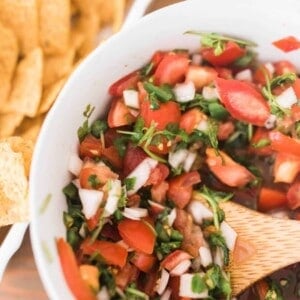
Ingredients
- 4 small tomatoes, around 2 cups - of course, this depends on the variety you grew. You could use two large tomatoes, or a bunch of cherry tomatoes.
- 1 bell pepper
- 1/2 white onion
- 1/2 lemon or lime, lime is more ideal
- 1-2 cloves garlic, depending on preference
- 1 jalapeno, you can leave this out if you are making this for the kids
- 1/4 cup chopped fresh cilantro
- 2 teaspoons salt
Instructions
- Dice tomatoes- try to get as much of the juice in the bowl as possible. If your tomatoes aren't that juicy, you could always add water later.
- Chop remaining vegetables and add to the bowl.
- Squeeze in lemon/lime juice.
- Add 2 tsp salt and mix well.
- Add salsa to a wide mouth mason jar and place weight on top, pushing down well, making sure the vegetables are submerged under the brine.
- Cover jar with fermentation lid or a loose lid. You want the gases to be able to escape without allowing anything in, like gnats.
- Leave on the counter at room temperature for 2 days to allow the good bacteria to take over. If your house is really warm, it may only take one day to ferment.
- Throughout the fermentation process, it is good to check your vegetables and make sure they are still submerged under the brine.
- Once, it is fermented to your liking, enjoy and keep stored place in the fridge for 3-4 months.
Notes
- You can use a starter from a previous batch of ferments; usually, I just use the straight salt water and allow the process to happen naturally.
- For this recipe I’m using salt, but you could use whey straight off of kefir or yogurt, water kefir, or a little juice from a previous ferment.
- If you don’t have weights, you could use a skin of an onion or a large slice of bell pepper to top the salsa and then pressing the salsa down well and submerging it below the brine.
- Add a few tsp of previous batch of ferments to your salsa to give it a probiotic boost, basically like a starter.
Nutrition
Nutrition information is automatically calculated, so should only be used as an approximation.
Let me know in the comments below what your favorite ferments are.
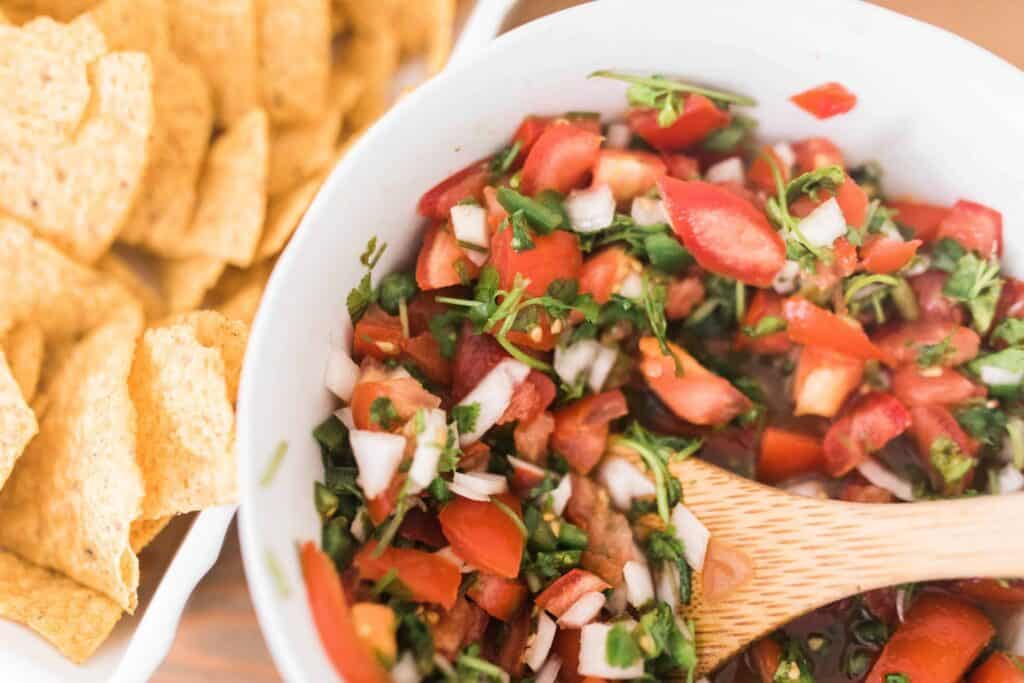
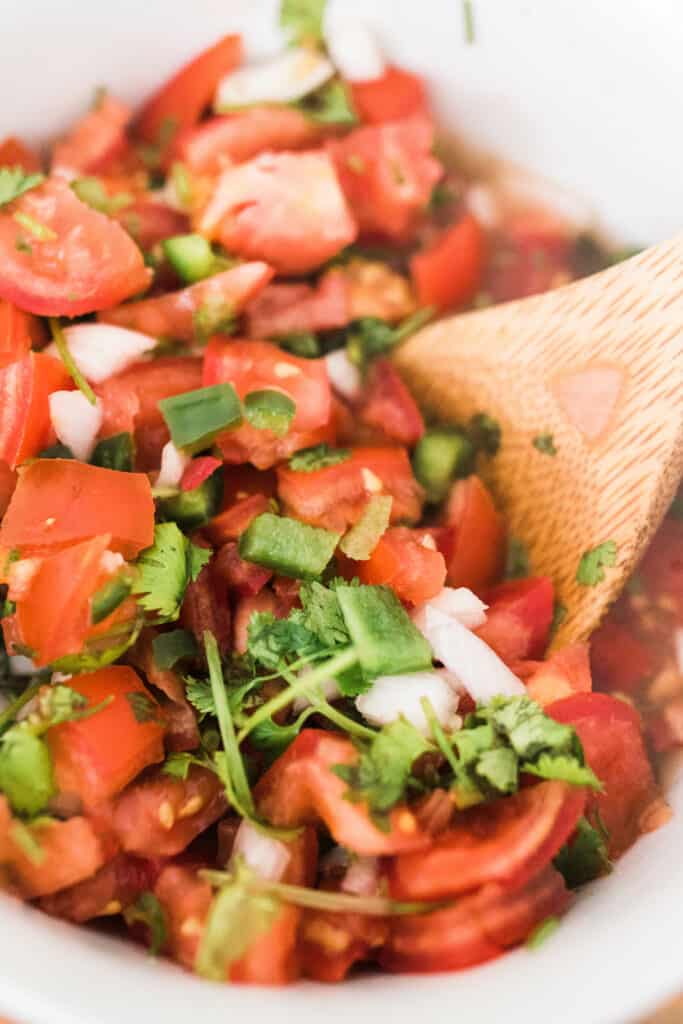
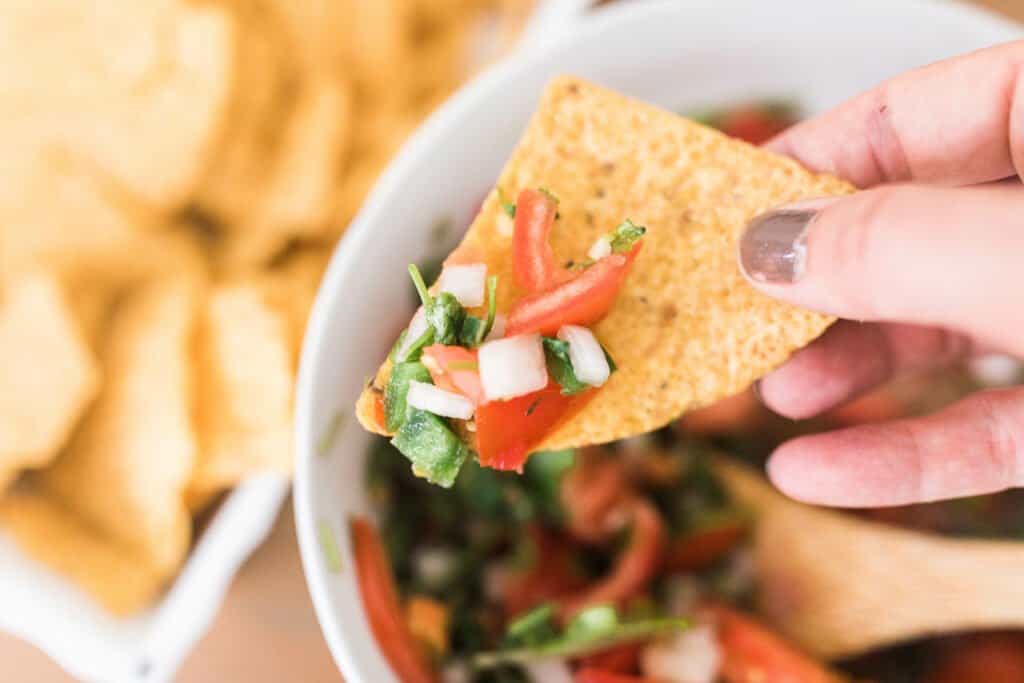
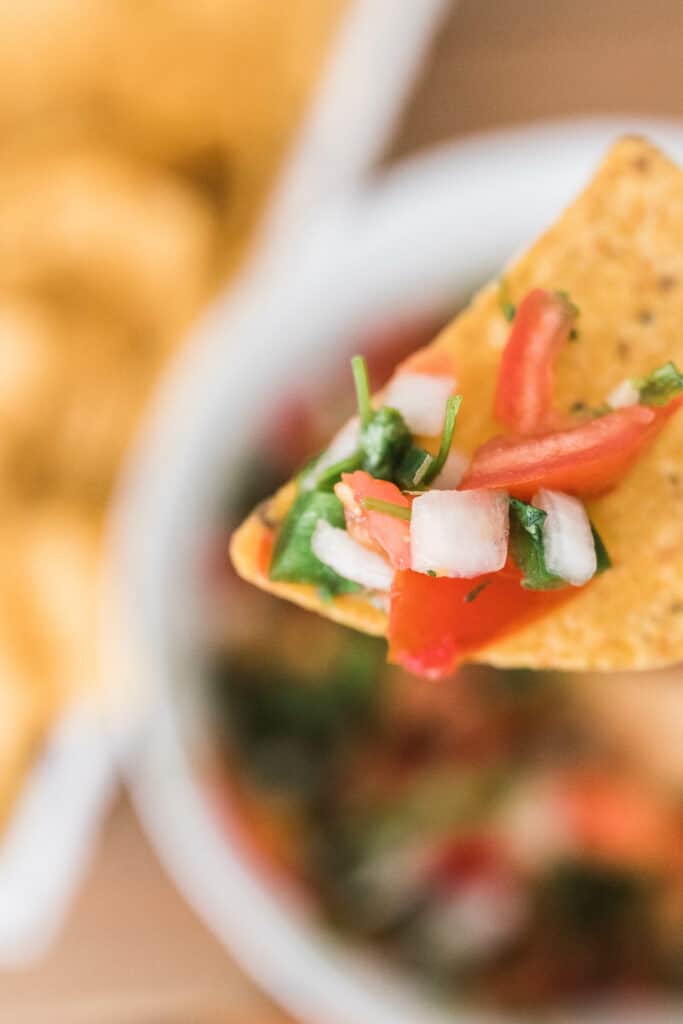
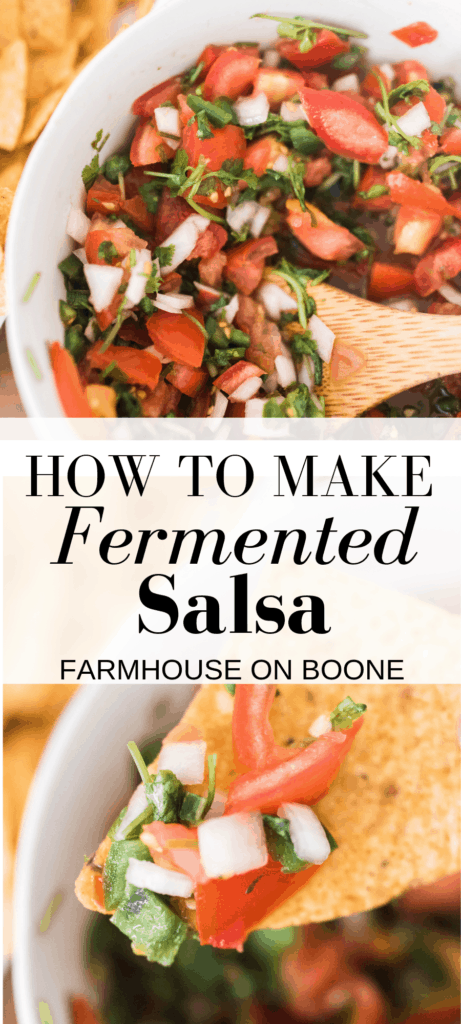
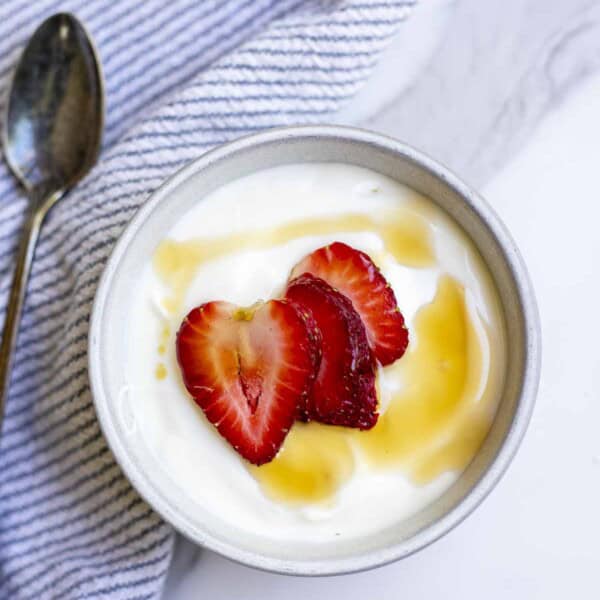
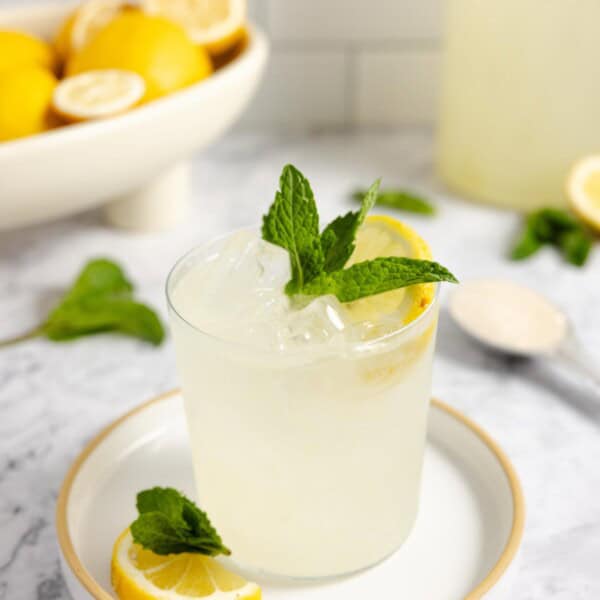
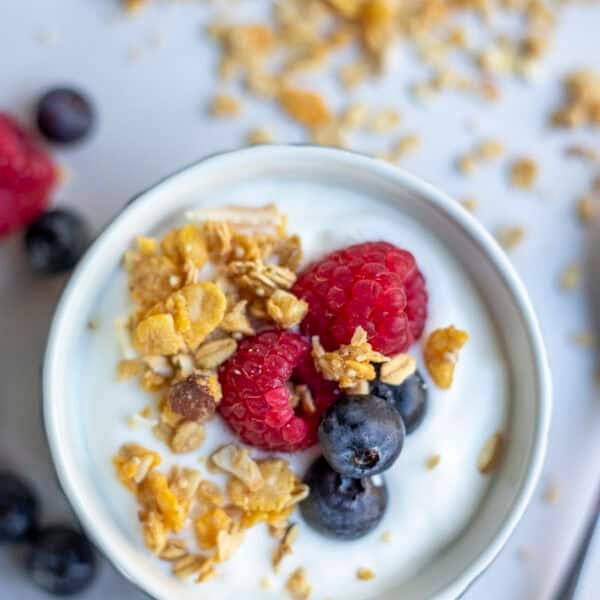
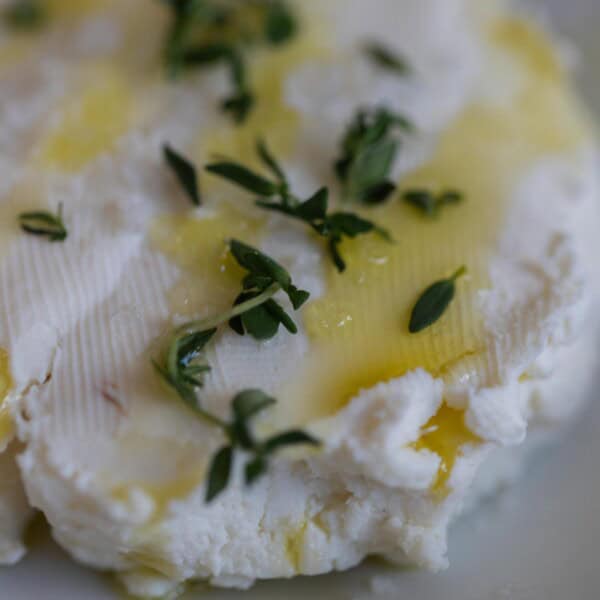






Thank you so much for simplifying the lacto fermentation process and removing some of the fear I had associated with it. I watched your class on The Traditional School of Living and got so much out of it! Especially the courage to start lacto fermenting. This came at a perfect time for me just after I harvested the tomatoes and peppers from my garden. Quick question: I made some LF salsa before leaving on a vacation and told my hubby to put it in the fridge. My hubby thinks he left it out for a couple days before putting it in the fridge. Is it still safe to eat?
PS This is delicious!! I’ve already made several batches. Thanks Lisa!!
Wonderful! Glad you enjoyed.
I have left many ferments out several days past the recommended time, and they have been fine. I usually go off smell, texture and taste!
Hi! I’m wondering if I can ferment a salsa if I used cooked down tomatoes as a base?
I wouldn’t recommend it because that would make the base too sterile to encourage good bacteria to grow.
This is my first ferment ever and it was so easy and delicious! My whole family loves it and I just did a double batch because the first is almost gone already. I have carrots fermenting and have a sourdough starter going, so fingers crossed I find the same success with those!
Sounds lovely. So glad your family loved this recipe.
Once the ferment is done, can you store it in the fridge with a barely loose canning lid and without the glass weight?
Yes! I replace the fermenting weight and lid with an airtight canning lid.
hi i want to start fermenting my foods for health reasons i have been searching on your site i see recipes but i need the vessels an lids or other things you use so please tell me an i’d like to give you credit for me purchasing them so let me know please i trust you as you have already learned an proved it to work. so i choose you to direct me
thank you
di
I was wondering if you could use minced garlic since I am out of cloves?
Yes, you sure can!
Hi, I just tried this recipe and the color of my vegetables faded and they got a bit soft. What should my end result be?
Can I LEAVE OUT THE GREEN PEPPER?
Yes! I have done that and it works just fine.
Hey there, I’ve made this salsa recipe and it is incredible! I tried the salsa after two days fermenting, wow it is snappy and delicious!
Quick question, why do you explain fermented salsa lasts 3-4 months while other fermented things last up to 12 months?
Curious about why that is. Thanks again 🙂
Hi Lisa, I did not have cilantro when I first made this salsa. After letting it ferment, can I now stir the cilantro in and put it in the fridge and would that last, or should I just add the cilantro whenever I pull the salsa out to use it?
I don’t honestly know this answer for sure, but I *think* it would be fine as long as it is just in the ferment rather than needing to be fermented along with ti.